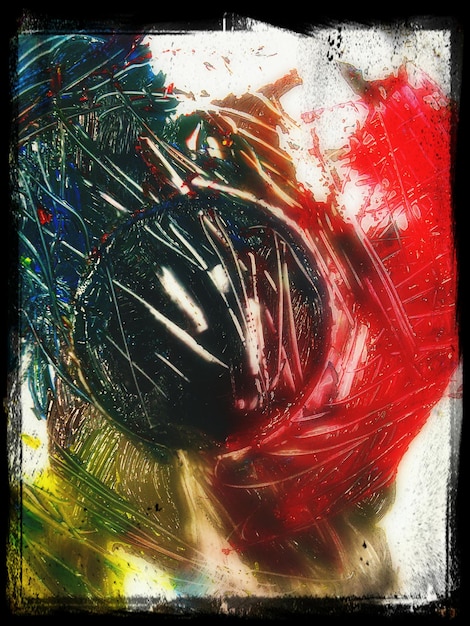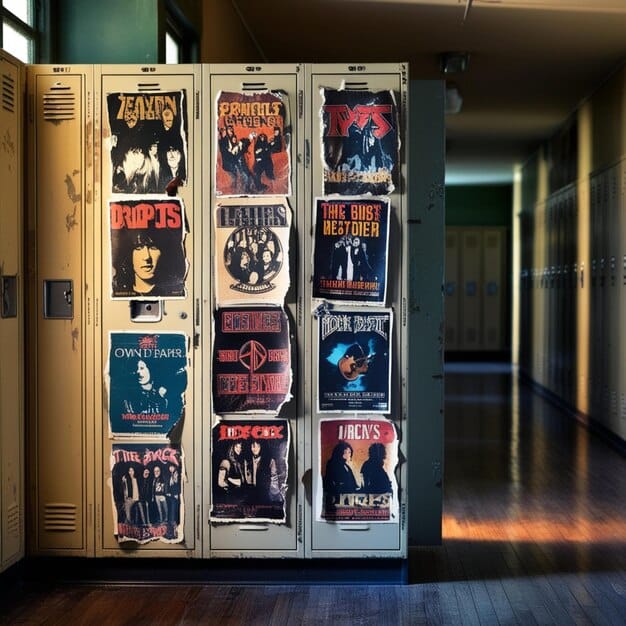The Lost Art of Movie Posters: Celebrating Forgotten Cinematic Treasures

The lost art of the movie poster is a celebration of visual marketing that captures the essence of forgotten classic films, enticing audiences with artistry that goes beyond mere advertising.
Dive into the captivating world of vintage cinema as we explore the lost art of the movie poster: celebrating the visual marketing of ‘Forgotten Classics’. These posters are more than just advertisements; they’re time capsules, each brushstroke telling a story of its own.
Rediscovering the Charm of Vintage Movie Posters
Vintage movie posters offer a unique window into the past, showcasing the artistic styles and marketing strategies used to promote films long before the digital age. These posters are not just advertisements; they are pieces of art that evoke nostalgia and tell stories about the films they represent.
The Allure of Hand-Painted Art
Before the advent of digital printing, movie posters were painstakingly hand-painted. This allowed artists to create stunning visuals with a level of detail and craftsmanship that is rarely seen today.
Typography as Art
The typography used in vintage movie posters was carefully chosen to reflect the mood and tone of the film. Unique fonts and lettering styles added to the overall visual appeal, making each poster a unique work of art.
- Hand-Painted Appeal: The uniqueness of hand-painted posters over mass-produced prints.
- Typography & Design: How fonts and layouts were used to create visual interest.
- Historical Significance: Understanding the cultural context and evolution of movie advertising.
These artistic choices not only served to attract audiences but also contributed to the enduring appeal and collectibility of these posters.

The Evolution of Movie Poster Design
Movie poster design has undergone significant transformations over the decades, influenced by technological advancements, shifting artistic trends, and evolving marketing strategies. By exploring this evolution, we can gain a deeper appreciation for the artistry behind these visual representations of cinematic storytelling.
Early Innovations and Influences
In the early days of cinema, movie posters were primarily text-based, providing essential information about the film. As the industry grew, posters began to incorporate illustrations and artwork to capture the essence of the movie.
The Rise of Iconic Imagery
The mid-20th century saw the rise of iconic imagery, with posters featuring memorable scenes and portraits of famous actors. This era produced some of the most recognizable and beloved movie posters of all time.
- Early 20th Century: The transition from text-heavy to illustrative designs.
- Mid-20th Century: The impact of iconic imagery and celebrity appeal.
- Modern Era: The influence of digital technology and graphic design.
Each era has contributed unique elements to movie poster design, creating a rich and diverse artistic legacy.
The Cultural Impact of Classic Movie Posters
Classic movie posters have had a profound cultural impact, shaping our collective memory of iconic films and influencing art, design, and popular culture. These posters are more than just advertisements; they are symbols of a bygone era, evoking nostalgia and sparking conversations about the movies they represent.
Posters as Time Capsules
Movie posters serve as time capsules, reflecting the social, political, and artistic trends of their respective eras. They offer insights into the values, beliefs, and aesthetics that shaped society at the time.
Influence on Art and Design
The artistic styles and design elements of classic movie posters have influenced countless artists and designers. From typography to color palettes, these posters have left an indelible mark on the world of visual communication.
The cultural impact of classic movie posters extends far beyond the realm of cinema, inspiring creativity and innovation across various fields.

Why Some Classics Have Been Forgotten
Despite their artistic and cultural significance, many classic films and their accompanying posters have been unfairly forgotten over time. Several factors contribute to this phenomenon, including changing tastes, limited availability, and the sheer volume of cinematic content produced each year.
The Evolving Tastes of Audiences
As popular culture evolves, so do the tastes of audiences. Films that were once widely celebrated may fall out of favor as new genres and styles emerge.
Limited Availability and Exposure
Many classic films are not readily available for viewing, which can contribute to their obscurity. Limited distribution, lack of streaming options, and infrequent screenings make it difficult for new audiences to discover these hidden gems.
- Changing Tastes: How evolving preferences impact a film’s popularity.
- Distribution Issues: The challenge of accessibility for older films.
- Competition: The constant influx of new content overshadowing classics.
By addressing these issues, we can help ensure that classic films and their posters are not forgotten but celebrated for generations to come.
Preserving Movie Poster History
Preserving movie poster history is essential for maintaining our cultural heritage and honoring the artistry behind these visual representations of cinematic storytelling. There are several ways to contribute to this effort, from collecting and archiving posters to promoting awareness and appreciation for their historical significance.
The Role of Collectors and Archivists
Collectors and archivists play a crucial role in preserving movie poster history. By acquiring, cataloging, and preserving these valuable artifacts, they ensure that future generations can appreciate their beauty and significance.
Educating Future Generations
Education is key to preserving movie poster history. By teaching future generations about the artistry, cultural context, and historical significance of these posters, we can foster a deeper appreciation for our cinematic heritage.
Through collaborative efforts, we can ensure that movie poster history is preserved, celebrated, and shared with the world.
Tips for Collecting and Displaying Movie Posters
Collecting and displaying movie posters can be a rewarding hobby, allowing you to showcase your passion for cinema and create a unique visual statement. However, it’s essential to approach collecting with knowledge and care to preserve the value and integrity of your posters.
Choosing the Right Posters
When starting a collection, consider focusing on genres or films that you are passionate about. Look for posters in good condition and from reputable sources to ensure authenticity.
Proper Storage and Display
Proper storage and display are crucial for preserving the condition of your movie posters. Use acid-free materials, avoid direct sunlight, and consider professional framing to protect your posters from damage.
- Choosing Wisely: Selecting posters based on condition, rarity, and personal interest.
- Storage Solutions: Tips for preserving posters from damage and decay.
- Display Options: Creative ways to showcase posters while protecting them.
With careful planning and attention to detail, you can build a stunning collection of movie posters that will be cherished for years to come.
| Key Point | Brief Description |
|---|---|
| 🎨 Hand-Painted Art | Unique art with detailed craftsmanship rare today. |
| 🎬 Cultural Impact | Shapes memory of films, influencing art & design. |
| 🖼️ Preservation | Collectors and archivists play a crucial role. |
| 💡 Collecting Tips | Focus on a film you are passionate about. |
Frequently Asked Questions
▼
Vintage movie posters were often hand-painted by skilled artists, showcasing unique artistic styles and detailed craftsmanship. They reflect the cultural and marketing trends of their time, making them valuable pieces of art and history.
▼
Early movie posters were text-based, evolving to include illustrations and iconic imagery. The rise of digital technology brought graphic design into play, changing typography and use of celebrity faces.
▼
Changing audience tastes, limited availability, and constant influx of new films can lead to classics being forgotten. Distribution issues and lack of streaming options make accessibility challenging for older films.
▼
Collecting and archiving posters, promoting awareness through education, and supporting preservation organizations are crucial. Sharing knowledge and appreciation for the artistry involved helps future generations value these historical artifacts.
▼
Focus on genres you love, check condition and authenticity, and store or display posters responsibly. Acid-free materials, proper framing, and avoiding direct sunlight are important aspects of preserving movie posters in good condition.
Conclusion
The journey through the lost art of the movie poster: celebrating the visual marketing of ‘Forgotten Classics’, reveals more than just advertising—it uncovers a captivating realm of art. These forgotten treasures remind us of the power of nostalgia, craftsmanship, and storytelling that once defined the cinematic experience. By preserving and cherishing these artistic relics, we ensure they continue to inspire and connect us with the magic of cinema’s golden age.





